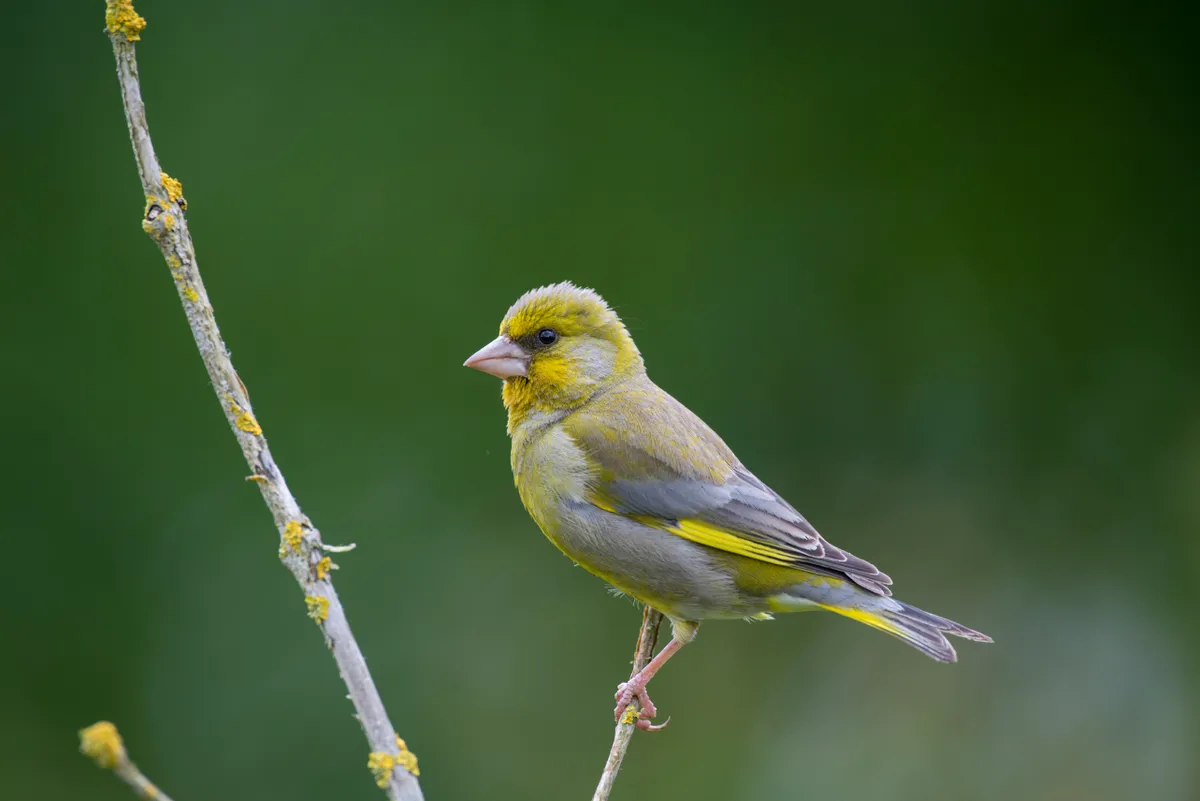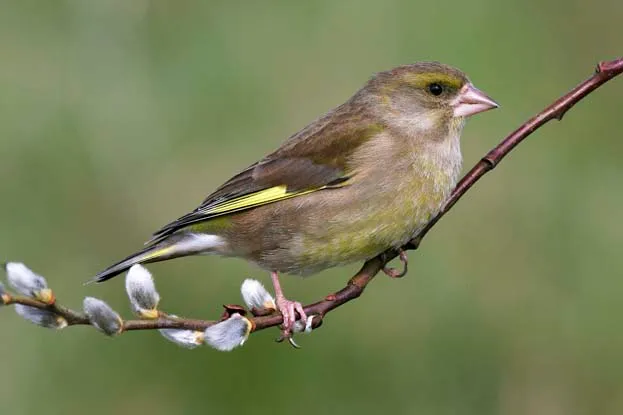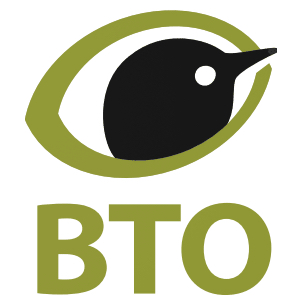1
Where do greenfinches live?
Originally greenfinches were confined to areas of woodland, or forest edges, and rarely ventured out into farmland or human habitation. While this is still the case in parts of continental Europe, here they started to visit gardens in the early 1900s, potentially as food provision in gardens increased.
2
Do greenfinches migrate?
Most of the greenfinches that breed in the UK are sedentary, seldom moving far. A few, however, will travel much longer distances, spending their winters in Ireland or continental Europe. Individual birds may behave differently in different years, which suggests that the movements are driven by high breeding densities or food shortages during late summer, rather than annual weather conditions.

3
When do greenfinches breed?
While greenfinches usually pair from late February, you may hear males singing as early as January. They often nest in loose colonies of four to six nest. Birds nesting in gardens where food is provided throughout the year appear to breed slightly earlier than pairs that nest outside of gardens. The young are fed on a regurgitated mix of seeds and insects.
4
What do greenfinches eat?
Greenfinches rely on seeds and their large bills allow them to be able to eat a wide variety. They show some preference for seeds held within fleshy fruits, such as rosehips, though often ignore the fruit and just eat the seed. During the autumn, seeds from yew and hawthorn are important, and in the winter, bramble. In gardens, they like sunflower seeds, whether they are black or hearts.

5
Are greenfinches getting rarer?
Until the 2005, greenfinches were one of the most common birds at our garden feeders. However, hit by the finch disease trichomonosis, they are now a rarity in many gardens and their population has declined by about 35 per cent. Trichomonosis can be spread between birds at garden feeding stations so it is very important to regularly clean feeders and bird tables.
6
How to identify greenfinches
Greenfinches are about the size of house sparrows. Males are dull-olive green with greenish-yellow on the breast and rump, and have bright yellow wing flashes. Females are duller in appearance, with less yellow in their plumage. Juveniles are paler overall, and have streaked plumage.
- The British Trust of Ornithology (BTO) works in partnership with over 40,000 volunteer birdwatchers to chart the fortunes of UK birds.
- Among the surveys that we coordinate is our popular Garden BirdWatch, the largest year-round survey of garden birds in the world.
- For more information about Garden BirdWatch or to speak to the Garden Ecology Team please email gbw@bto.org
